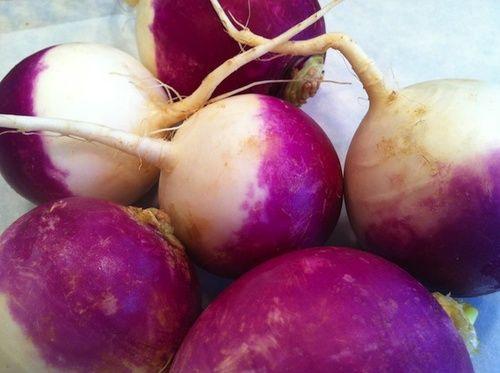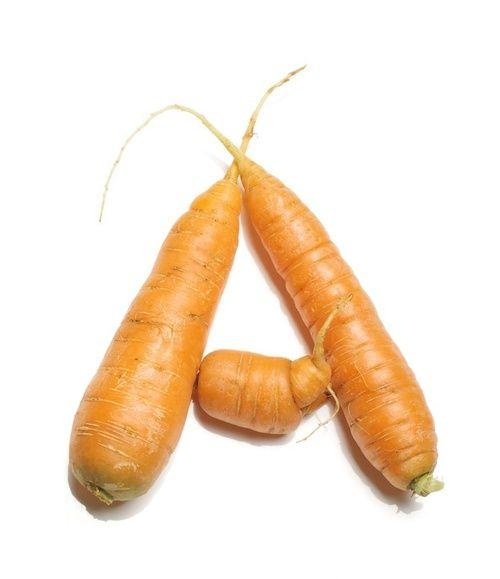, Naturopath
La turnip (Brassica rapa) is a herbaceous plant of the cruciferous family, the same as cabbage. Useful in case of cystitis, constipation and acne, the turnip also helps in prevention to the formation of tumors. Let's find out better.
> Properties and benefits
> Calories and nutritional values of turnip
> How to use the turnip

Turnip is a vegetable that was once loved by the Latins. Until recently it solved the problems of many meals of poor people, constituting a point of reference in seasonal nutrition. Despite being a common vegetable, it has its own importance from a nutritional point of view.
The turnip is consumed root,, large and round or oval in shape, with white or pink-violet skin and white or yellowish or pink pulp, with a sweet or spicy taste.
Turnip greens or broccoli are the shoots with leaves and flowers not yet blossomed. The leaves are used as fodder for farm animals, large and small. Until a few years ago, an oil was obtained from the seeds which was used for burning.
Description of the turnip
The turnip is an annual and biennial plant with very incised leaves with rounded dark green lobes. The yellow flowers gathered in inflorescences characterize its crops in winter; the fruits are silique. The swollen, rounded, whitish roots are purple at the collar.
This plant is grown for bothhuman nutrition, Both for forage, both for its large roots. Sowing takes place from the end of July to September in a dissolved acid soil that contains sand and clay, mostly in large expanses.
It is a robust plant, but especially if the season has been too dry, it can be attacked by an insect improperly called a flea by gardeners. The roots are harvested in January-February after flowering but then the leaves are not edible.
Properties of the turnip
The consumption of turnips, as part of a varied and balanced diet, is indicated in the case of:
- General tiredness, due to the richness of vitamins and mineral salts;
- Cystitis, kidney stones, for diuretic and anti-inflammatory action;
- Constipation, due to the presence of fibers which, in addition to regulating the evacuation, help to eliminate the carcinogenic substances present in the intestine;
- Eczema and acne, for the purifying action;
- Bronchitis, colds, coughs and pharyngitis, because the sulfur substances thin the bronchial secretions, favoring their elimination. However, some sulfur substances, such as isoticates and goitrins, can reduce the use of iodine by the thyroid, interfering with the action of thyroid hormones, especially when low amounts of iodine are introduced into the body. Therefore the consumption of these vegetables is not recommended for people who have diseases or alterations in thyroid function;
- To prevent the formation of tumors, especially of the digestive system, uterus and breast.
You can learn more about the properties of vitamin A and the foods that contain it

Nutritional characteristics
100 g of turnips contain 18 kcal.
The elements contained in turnip and turnip greens are:
- Water (94%), few proteins (1%) and sugars (4%), therefore they are low in calories;
- Well represented are vitamin C, antioxidant and strengthening the immune system, and, particularly in turnip greens, also folic acid and carotenoids, which are then transformed into Vitamin A;
- There are numerous mineral salts such as calcium, phosphorus, potassium, magnesium, sulfur, iodine; iron and copper are present in turnip greens;
- Useful fibers for intestinal regulation.
Turnips and buds also contain sulfur and nitrogen compounds (thiocyanates and isothiocyanates, indoles, etc.) which stimulate the body's antioxidant and detoxifying mechanisms.
How to use
We recommend the consumption of fresh, raw and grated turnips, but also in decoction, cooking 100 g of turnip in 1 liter of water or milk (three small glasses a day).
In case of sore throat you can gargle with the turnip decoction. In the presence of chilblains, abscesses or boils, the inflammation can be reduced by rubbing the affected area with a piece of baked turnip with the peel, trying to get some juice out.
READ MORE
Turnip among the natural remedies for sore throats: discover the others
Other articles on turnips:
> September turnips
> Turnip greens, simple and healthy recipes
> Black turnips, properties and benefits
> Turnip, varieties and benefits
| Cookingwithchezcindy.com


























